Lichen Sclerosus, also known as Lichen Sclerosis or Balanitis Xerotica Obliterans (BXO), is an acquired disease of the penis and urethra. While it is established that the disease is not cancerous (but can be “pre-malignant” in some cases), contagious, or sexually transmitted, the exact cause of the chronic and often debilitating disease is not currently known. Men with Lichen Sclerosus tend to develop one or more physical abnormalities, including discoloration of the penile skin, especially in the area near the head of the penis or the urethral opening moving towards the undersurface of the penis, with the urethra also experiencing induration and narrowing. Another abnormality related to BXO is a smoothing of the indentation between the head and shaft of the penis. In some cases, the penile skin can fuse to the head of the penis giving the appearance of an uncircumcised penis where the skin can’t be pulled back. This is called phimosis, a condition that can affect uncircumcised men where the skin can’t be easily retracted or pulled back. However, unlike typical phimosis, with lichen sclerosus AKA BXO, this can develop in circumcised men. In addition, it is possible that that penile shaft skin can actually be permanently fused to the head of the penis.
The symptoms of the disease can vary, ranging from subtle to dramatic. Patients with Lichen Sclerosus often tend to develop urethral stricture disease. The strictures can be short and limited solely to the urethral opening or can involve part of the urethra or even the entire anterior urethra. It is common for our patients to have this condition for years without a diagnosis, even though the diagnosis should be easily discernible on physical exam by a doctor once Lichen Sclerosus is suspected.
Below, you’ll learn more about the various different penile and urethral changes that occur with Balanitis Xerotica Obliterans, as well as suggested BXO treatment.
Sometimes the signs of BXO are obvious, but in other cases, the changes caused by the disease can be much more subtle. The following 4 pictures are of a patient who was recently referred to the Center for Reconstructive Urology for treatment of a long urethral stricture. While the initial inspection of the penis suggested completely normal penile skin, when a man has meatal stenosis or a very long stricture without a history of prior Urologic surgery, we always suspect BXO.
Upon closer inspection, we began to discover some signs of the disease. There was a narrowing of the urethral opening. This patient was circumcised and when a man is circumcised, there is generally a very feint circumferential scar along the penis shaft 1-2 cm away from the head of the penis. With BXO, there can be a migration of this scar towards the head of the penis and the area and scar become whitish. This is what was noted in this man. Retracting or pulling back on the skin of the penis revealed a smoothing of the groove between the head and shaft of the penis, another classic sign of BXO. Despite only having mild skin changes as shown below, the patient was found to have severe urethral stricture disease involving the entire anterior urethra.
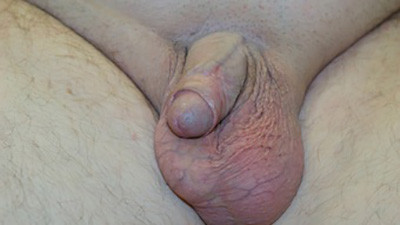
Normal appearing penis, initial inspection
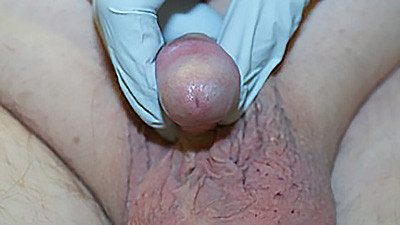
Narrow urethral opening
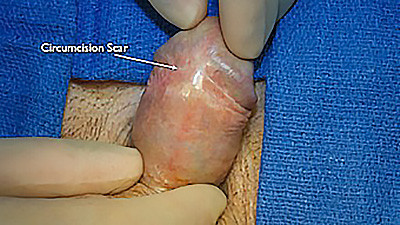
White circumcising scar towards glans
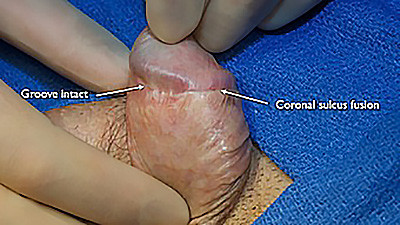
Smoothing of groove along coronal sulcus
More severe cases of lichen sclerosus exhibit abnormalities that are much easier to spot. There can be noticeable shrinkage of the penis and the urethral opening can move towards the undersurface of the penis. Some circumcised patients can even appear to be uncircumcised as the penile skin fuses to the head of the penis and cannot be retracted.
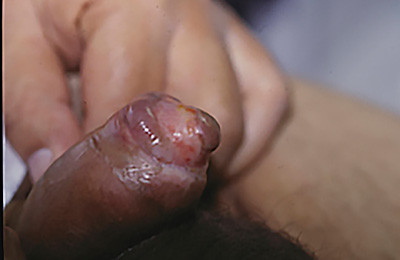
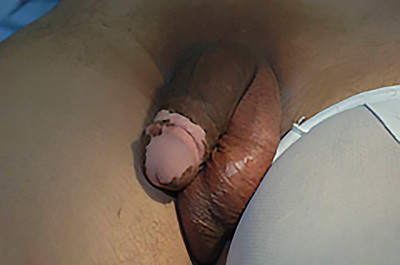
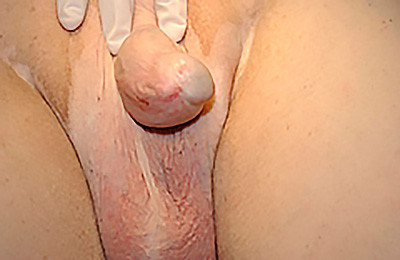
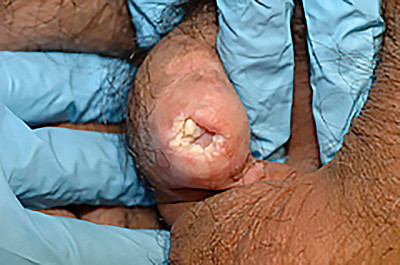
One of the side effects associated with BXO is the development of urethral strictures. Below are retrograde urethrograms (RUGs) of 2 patients diagnosed with Lichen Sclerosus after very early detection of the disease. The first patient had a Lichen Sclerosus case that caused a stricture that only involved the very distal urethra.
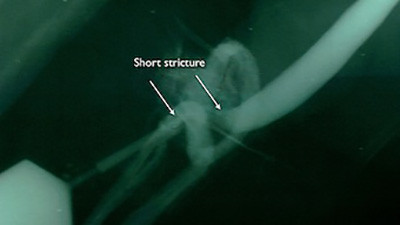
BXO stricture limited to the most distal urethra
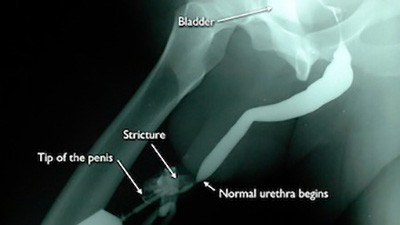
BXO stricture extending into the penile urethra
This next example is of a patient who had an extensive history of slow urination and mild penile skin changes. Although he had areas of the urethra that were completely normal in size, the majority of the penile urethra was extremely narrow. The distal bulbar urethra, located just below the base of the penis, and the proximal bulbar urethra, the portion of the anterior urethra closest to the external sphincter up towards the prostate, also had stricture narrowing.
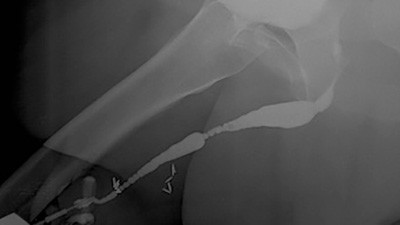
Retrograde urethrogram demonstrating severe disease
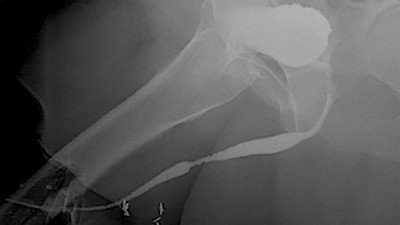
Voiding study (VCUG) of the same patient
This last set of films are 2 examples of extensive BXO strictures that have caused significant damage to the entire anterior urethra. These patients had an extensive history of a narrowing of the urethra that had been unsuccessfully managed with dilations over a period of several years. It is likely that their strictures were initially short, but over time and without effective treatment, the strictures progressed. However, this hypothesis could not be confirmed because they were treated without first having any kind of diagnostic imaging, a common mistake among inexperienced urologists.

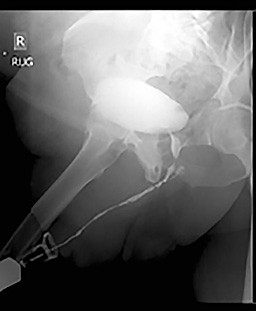
When patients with BXO are referred to us or diagnosed for the first time during a physical examination, our initial approach is to comprehensively evaluate the urethra. It is only after a thorough evaluation that we will discuss treatment options. The initial test is a Bougie calibration, an easy and painless test that allows us to determine the size of the opening. Then, we perform a cystoscopy to locate any narrowing of the urethra beyond the tip of the penis. If there is any narrowing, urethral imaging is then performed at the same time to assess the exact length, location, and severity of the urethral stricture.
After a complete diagnostic evaluation is made, we begin BXO treatment. The approach to this condition should be individualized, as one’s BXO treatment plan varies based on one’s symptoms and the findings of the testing. A comprehensive plan is best formulated by a urologist with expertise in male urethral and penile disorders. While some of the skin changes respond favorably to topical steroid cream (such as Temovate 0.05%), no topical cream can provide a cure for any associated strictures.
In some specific cases, circumcision may be beneficial; however, circumcision is only helpful in select cases where there is redundant diseased skin. Most of the time, circumcision in a circumcised patient could lead to a skin deficiency. If there is adequate skin length, but there is a narrowing and pinching the distal skin towards the head of the penis, Dr. Gelman can try an innovative BXO treatment that consists of making longitudinal incisions and transverse closures along the penile skin. This revision surgery adds width where needed without having to remove any skin.
When BXO is associated with urethral stricture disease, it is best to avoid observation or dilation to treat the stricture. The best treatment depends on the length of the stricture. The ideal treatment for the management of very short strictures is a meatotomy or extended meatotomy, which is a simple effective procedure to cut open the narrow opening in the operating room. For longer strictures, the recommended treatment is a urethroplasty (open urethral reconstruction).
The most complex strictures associated with BXO are pan-urethral strictures, which involve the entire anterior urethra and can measure over 22 cm in length. Although these are incredibly complex strictures that can prove quite difficult to treat, the Center for Reconstructive Urology has successfully reconstructed the urethra of many patients with this problem over the past 21 years.
In the past, it was reported that using penile skin as a tissue to augment the narrow urethra could lead to a high rate of BXO recurrence. It was suggested that because the disease involves penile skin, the recurrence may be due to the disease progressing into the penile skin. It was proposed that if distant tissues (buccal mucosa tissue from inside the cheek or extra-genital skin grafts from the thigh) were used instead of penile skin, perhaps the long-term success rate would improve.
Our preferred approach for many years was to reconstruct the bulbar urethra (the urethra under the penis) in one-stage using bilateral buccal mucosa grafts. For the remainder of the urethra, we typically used to perform a first repair using a split-thickness skin graft taken from the thigh. During the first stage, the skin graft was placed adjacent to the urethra, and, following surgery, the opening of the urethra was at the base of the penis. Over the next 4-6+ months, the graft became more supple and could be rolled into a tube to reconstruct the urethra, setting the stage for the second step of repair.
What we noticed was that our technical success rate (at 4 month check) was 100% for our patients. Also, when only tissue from inside the cheek was used, the long term success rate has been 100% so far. However, when any thigh skin grafts were used, although out technical short term results were 100% success, there were late failures indicating that thigh grafts do not hold up as well as we would like. We presented our findings at the 2019 meeting of the American Urological Association and hope to publish this data this year.
Although our technical success rate with BXO treatment is very high, there will always be a risk of late recurrence with this disease. While surgery addresses the obstruction, it is not by any means a BXO cure. Therefore, life–long follow-up is incredibly important for any patient diagnosed with Lichen Sclerosis.

